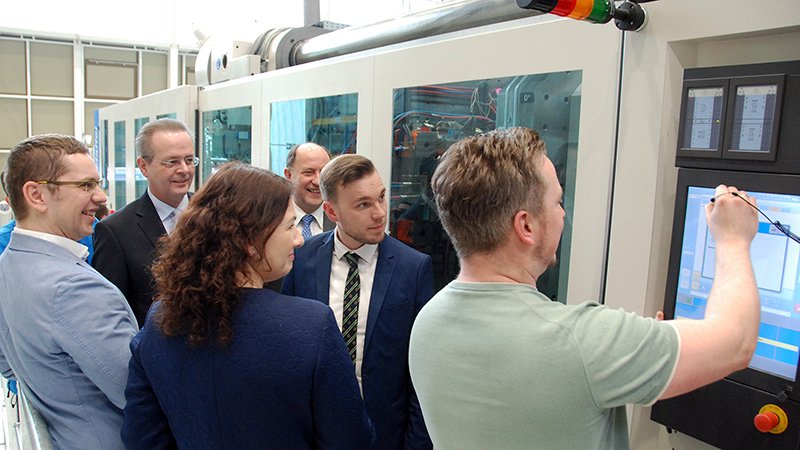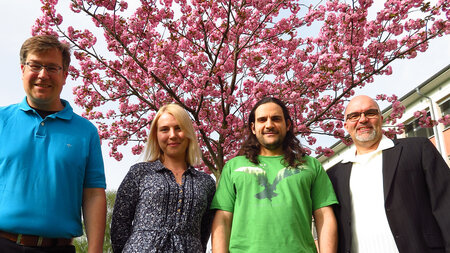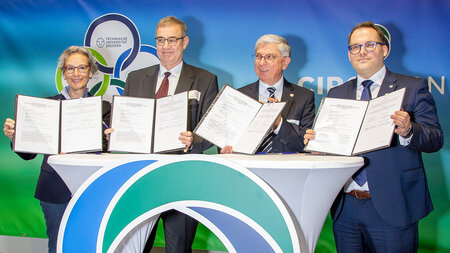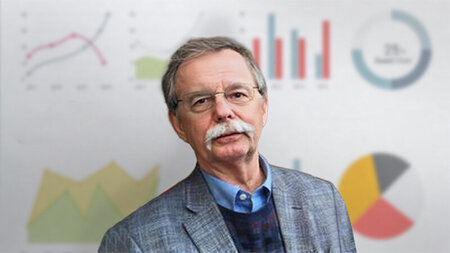Europe’s Top Networkers of Lightweight Engineering are in Chemnitz
The Federal Cluster of Excellence MERGE at the TU Chemnitz provides an international impetus for sustainable development in the field of lightweight engineering
-

An example of the international networking of MERGE is the “1. Polish-German Bridge Conference”, held in Opole in April 2016. Previously, the associates from Opole and learned about the research work of the federal cluster of excellence of the TU Chemnitz. Photo: Mario Steinebach
The Federal Ministry of Education and Research supports the Federal Cluster of Excellence MERGE of the Technische Universität Chemnitz linkage on an international level within the framework of the funding measures “internationalisation of top clusters, future projects and comparable networks”. “Out of the 43 clusters of excellence of the Federal Government Excellence Initiative in Germany, it is the only cluster whose internationalisation is promoted this way”, president Prof. Dr. Gerd Strohmeier states and refers to MERGEurope. Known by that name is a Europe-wide competitive network, that was developed over the time span of the last ten months with the TU Chemnitz in charge. More than 400 associates of science and economy are already connected through the network, coming from Poland, Czech Republic, Spain, Italy, Germany and the Netherlands. Illustrated by MERGE coordinator Prof. Dr. Lothar Kroll “this network conduces the exchange of knowledge and information, creates synergies and helps to develop new research areas and markets in the field of lightweight technologies.”
President Prof. Dr. Gerd Strohmeier says: “If the subject of lightweight engineering and international cooperation is addressed in Europe, the Federal Cluster of Excellence MERGE of the TU Chemnitz has a central priority in this important research area of the 21st century”. “The reason for that is the interdisciplinary concept of MERGE with a bridging function between science and economy. It displays a unique position in the German cluster landscape in the field of key technology lightweight engineering”, Prof. Dr. Kroll adds. "MERGE significantly contributes to the reputation and influence of the TU Chemnitz in Europe and beyond", Strohmeier affirms.
But now the Chemnitz engineers want to take it all a step further. In cooperation with six other research associations they want to establish a European Lightweighting Clusters Alliance (ELCA). “In its launching phase, the alliance connects groups with more than 1,000 European businesses and research institutions in the field of lightweight engineering in the area of mobility and transport”, Kroll reports. The associates of the alliance are from Great Britain, France, Italy, Sweden and Germany. The coordination of the project is once again in the hand of the Chemnitz researchers. Kroll assures: “Nowadays, when someone is interested in the sustainable development of lightweight engineering and want to compete on an international level, they have to think in cross-national networking structures”. “The great diversity of the materials, structures, and technologies and their applications utilized in lightweight engineering need close interdisciplinary cooperation and knowledge exchange on an international level in order to successfully operate research institutions and companies in competition”, MERGE coordinator Kroll adds.
Key word: Federal Cluster of Excellence MERGE
About 100 scientists and technicians are working in this nationally unique project on a consolidation of technologies for multifunctional lightweight structures since 2010. The objective is to merge still separate manufacturing processes during the processing of different material groups such as textiles, plastics, and metals and to equip those with sensor and actuator technologies. The large-scale production of multicomponent parts would thus be cost-effective and energy-efficient. Integrated into the federal cluster of excellence are large enterprises as well as various small and medium enterprises, complementary illustrating the value-added chain “from raw material to lightweight structure”. The project outcomes of the cluster serve the leading markets of the automotive industry, aerospace, mechanical engineering, and the microsystem technology.
(Translation: Alissa Hölzel)
Mario Steinebach
09.11.2016





